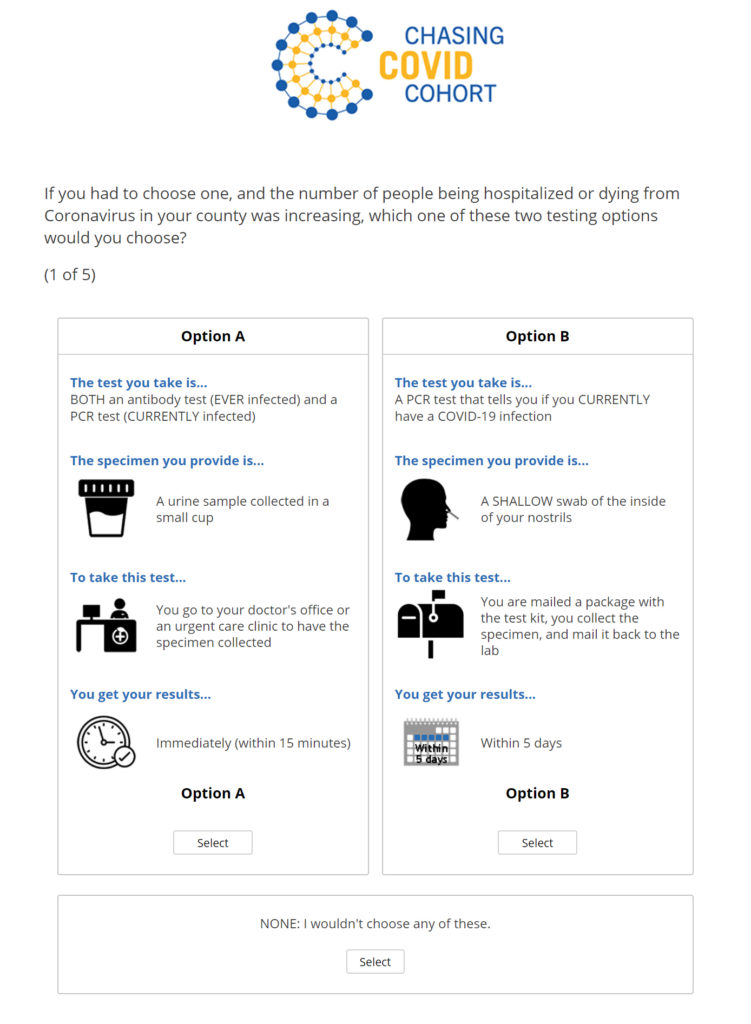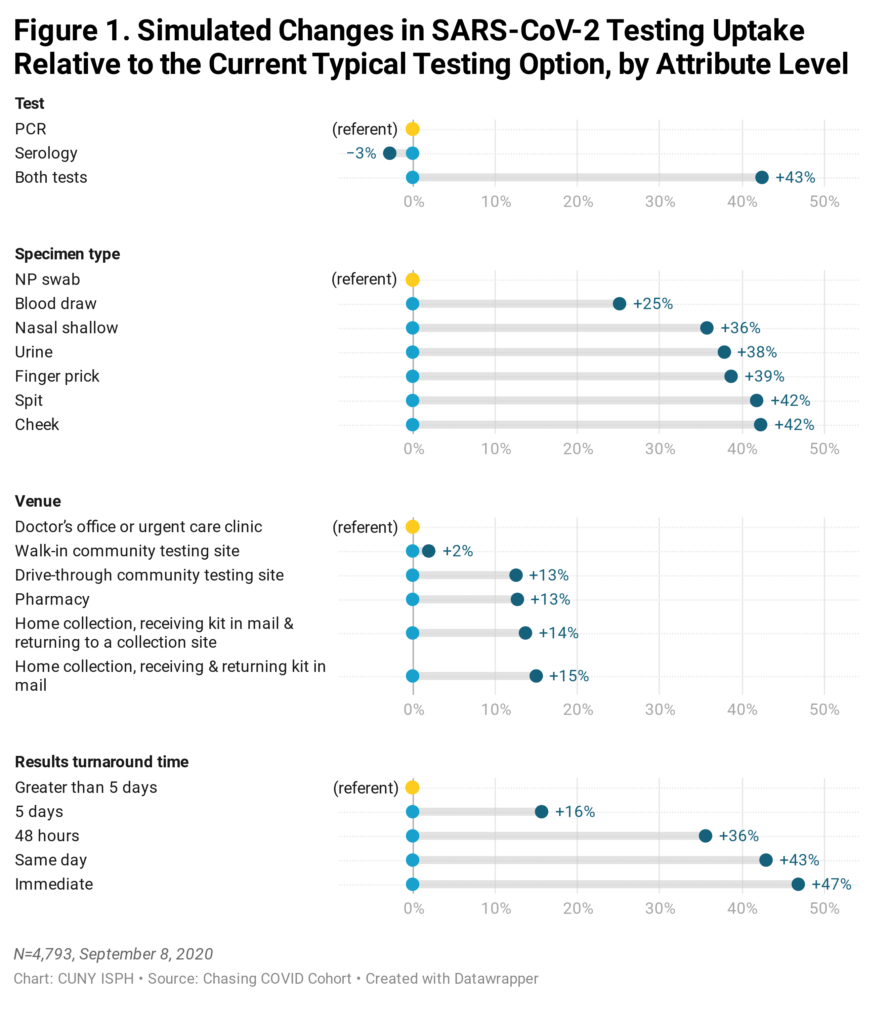As part of a routine follow-up survey in the CHASING COVID Cohort study, an additional section was included to learn more about SARS-CoV-2 (COVID-19) testing preferences. 4,793 participants responded between July 30 and September 8, 2020. This second survey section, which used a discrete choice experiment (DCE), asked participants to imagine that ‘…the number of people hospitalized or dying from coronavirus in your community was increasing.’ Against that backdrop, we asked participants to choose between two hypothetical testing scenarios that included different test types, specimen types, testing venues, and result turnaround times. Each participant saw five sets of options in total.

We found that participants overwhelmingly valued rapid result turnaround time and preferred tests that gave them information about both current and past infection through polymerase chain reaction (PCR) and antibody testing (serology), rather than only about current or past infection alone.

Specifically, our simulation found that 97.7% of respondents would be likely to choose:
✓ PCR and serology
✓ using a saliva sample
✓ taken at a pharmacy
✓ with same day results
Only 0.6% of respondents would be likely to choose:
✓ a PCR test from a doctor’s office or urgent care clinic
✓using a deep nasal swab
✓ with test results in more than five days
which is the current typical testing scenario in the US
The remaining 1.8% of respondents in this specific simulation would opt not to be tested at all.
These findings increase our understanding of the factors that might affect a person’s decision to get a test for COVID-19. We believe this information could be used to increase testing uptake in certain populations where transmission and serious outcomes from COVID-19 is increasing, which is currently occurring in many communities across the country.
A link to the full article pre-print is here.